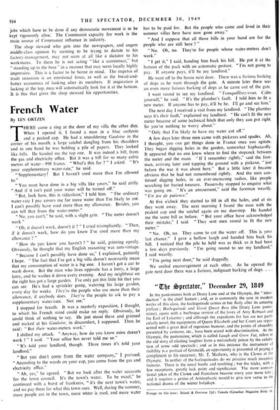"Vie *prttator," December 29, 1849 In the pantomimes both at
Drury Lane and at the Olympic, the " intro- duction " is the chief feature ; and, as is commonly the case in modern works of this class, the harlequinade comes in but flatly after its amusing preface ; Harlequinade and Good Queen Bess (the Drury Lane panto- mime), opens with a burlesque version of the loves of Amy Robsart and the Earl of Leicester ; and although the expedients for fun are not parti- cularly novel, the equipments of Queen Elizabeth and her Court are repre- sented with a great deal of ingenious humour, and the points of absurdity presented by costume, etc., have been seized with discrimination. At the Olympic, the pantomime, which is called Laugh and Grow Fat, refers to the old story of eliciting laughter from a melancholy prince by the exhibi- tion of some odd spectacle ; and as in this instance the instrument of risibility is a portrait of Grimaldi, an opportunity is presented of paying a compliment to his successor, Mr. T. Mathews, who is the Clown at the Olympic. In neither of the harlequinades do we perceive much inventive humour. There is the usual bustle and tumbling ; but the tricks, with J few exceptions, greatly lack point and significance. The more conven- tional jokes of the Clown and Pantaloon become every year more trite; and it requires a genius of Aristophanic mould to give new verve to the national drama of the winter holydays.






























 Previous page
Previous page